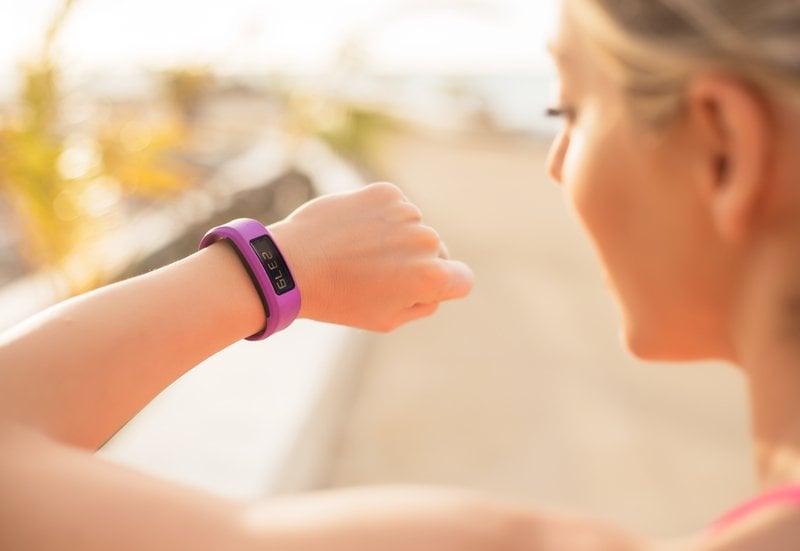Why Wearable Tech Is the Perfect Fitness Gift for All Ages

This is the time of year when everyone is scrambling to find that perfect gift—that unique something the person on your list really wants but wouldn’t want to spend the money on for themselves. This is why wearable tech is the perfect fitness gift, and it can put a smile on anyone’s face, no matter what gender or generation.
What is Wearable Tech?
The term “wearable tech” encompasses quite a range of products, from pedometers that simply track your steps to trackers that monitor heart rate, sleep patterns, calories burned, and more. With built-in monitors, these fitness gadgets can take many forms. What’s unique about these nifty little gadgets is that you don’t have to carry them around with you. You can simply wear them to reap all the benefits.
These new “wearables” are now “everydayables,” and wearable fitness technology isn’t just stopping at your wrists anymore. These days, you’ll find wearable fitness technology in wristbands, shoes, clothes, rings, and even hats—all of which can track virtually every move and report back to you via a convenient app on your smartphone.
What Does Wearable Fitness Technology Measure?
So, you’re sold on the wearable fitness tech. Now, you’re probably wondering what kinds of things wearable technology measures. Here’s a list of what some of the more popular gadgets can track. Keep in mind that much of the fitness tech combines measurement data for a more all-inclusive tracking experience.
Steps—the good old pedometer is still alive and well. Pedometers track your steps by sensing the movement of your arms and hips. While actual step distance may require some calibration since everyone’s gait is different, pedometers, especially with the more modern technology, can get really close to giving you a good number for the steps you’ve walked in a day.
Calories burned—here’s where things can get murky. Yes, there are trackers that purport to have the ability to track calorie burning, but they may not always be accurate. Studies show that devices may not have the ability to accurately measure calorie expenditure. According to a study published in the Journal of Personalized Medicine, the number of calories burned varies from the true amount burned by an average of 27% with the least reliable of the devices coming back with an error of as much as 93%!
What does this translate to for the wearer? Just keep in mind that these are non-medical devices and use the information with a grain of salt. They’re more of a guide than a strict report on your legitimate calorie usage.
You can also use the device to calculate a baseline of calories burned on a daily basis and then try to burn more or less than you did the day before based on your personal trending numbers.
Heart rate—in sharp contrast to tracking calories burned, fitness trackers which monitor heart rate are pretty much spot on. With almost medical-grade accuracy, these devices can actually help provide patients and doctors with useful information regarding heart rate throughout the day and, with certain devices, even an EKG.
Sitting time—this is also a very useful side of fitness trackers since so much of the modern day is spent sitting. With a helpful reminder to get you up and out of your chair, the new wearables can help you break the pattern of sitting for lengthy periods of time or forgetting to get up and take breaks from your work (or screen time).
Screen time—minimizing screen time seems to be a new trend with all the addictive digital apps, games, and social media sites. It’s easy to get sucked into the vortex of altered reality and not even realize how long you’ve had your nose buried in your apps. Measuring your screen time can help you become more aware of the time you’re spending on your phone or tablet and can assist you in minimizing that time if you so desire.
Food and caloric intake—with apps like My Fitness Pal and My Plate at the tip of your fingers, keeping track of what you eat is easier than ever. Most apps even have a barcode reader for the ultimate in ease of use. And, a little awareness goes a long way, especially if you’re trying to rein in an unruly diet plan.
Sleep time—not only do fitness trackers sport alarms to help roust you come morning, they can also monitor both the amount of sleep you get and the quality. Track your sleeping trends to see where you can improve or set up a “bedtime” alarm to help you remember to get to bed on time.
Fall detection—worried about falling and not being able to contact anyone? There’s a gadget for that.
Track your route—yes, with GPS enabled features, you can map out your entire route, track your time and distance, and even estimate calories burned. Some apps even offer alternative routes for you to try, provide musical playlists for your enjoyment, and can speak motivational phrases to you as you progress through your workout.
Who Can Benefit from Wearable Tech?
Maybe it would be easier to list who could not benefit from wearable fitness technology since virtually every person can probably gain something from such trackers. With myriad options for health, fitness, and dietary tracking (and so much more), it’s clear to see that everyone can probably find a tracking device they will find useful.
Benefits of Wearable Fitness Tech
Wearable fitness tech is a great gift across the board. Here’s how people benefit from these gadgets:
- Overall exercise behavior can be improved by the simple fact that you’re now conscious of your behavior and aware that it’s being tracked.
- Health outcomes can be improved through the monitoring and tracking of health markers such as heart rate, blood pressure, sleep time, movement, and calorie intake and output.
- Fitness gains can be achieved once you see where your numbers lie. Strategies can be developed to improve your outcomes and get you on track for optimal health.
- There’s nothing quite like accountability and seeing things in black and white to get you motivated to improve and stay the course.
- Measuring and tracking mean you’ll be able to see positive or negative trends in your fitness and health habits. As the saying goes, things that get measured and tracked get improved, and your wellness is no different.
With so many different wearable fitness tech options available, you’re sure to find the right fit for everyone on your fitness shopping list—including you!




 7 Signs Your Body is Seriously Low on Collagen (not just wrinkles)
7 Signs Your Body is Seriously Low on Collagen (not just wrinkles) Health Expert: "Turmeric Doesn't Work (unless...)"
Health Expert: "Turmeric Doesn't Work (unless...)" 3 Warning Signs Your Probiotic Supplement is a Total Waste
3 Warning Signs Your Probiotic Supplement is a Total Waste

